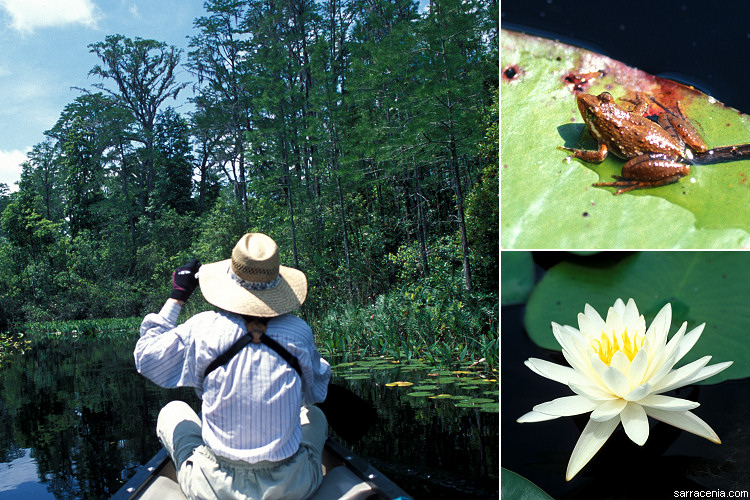
Life!:
Okefenokee is crazy, it's just crazy.
I have been to many bogs sites in the world, and most are small sites
one to several
acres. But Okefenokee is huge!
Let me try to explain something, something subtle and hard to convey with
my limited writing skills.
Remember those tales you've read of civilizations that became bloated and
decadent with grotesque practices, with rulers or the extremely wealthy
lolling about, eating dinners of pheasant's tongues, figs,
and scented wines,
while servants attended to their every twisted desire?
Caligula, Caliph Vathek,
Vladimir Harkonnen, William Hearst....
Similar to those decadents, Okefenokee is a vastly rich, expansive bog.
You can pass through a dense thicket of trees which give way to a field
of beautiful lily pads (Nymphaea odorata, lower right), or
perhaps a pond filled with stands of spatterdock, or perhaps
a field of grass bearing groves of pitcher
plants. Again and again on our trip, we found ourselves in incredible
places that, if more easily accessible, would be mandatory target locations
for a carnivorous plant
enthusiast. But to Okefenokee, they were just
unnamed little nooks. The first day of our trip I was in awe. By the fifth
day, I was actually laughing out loud at how absurdly fabulous the
place was, and I was a little embarrassed, too, at the opulent
flaunting of natural
wealth that the swamp has. It is decadent in its riches.
For god's sake, visit it while it is still like this!
(Oh, that is Beth in the front of the canoe, watching an
alligator in our trail. Note
she is wearing full sun coverage and paddling gloves. Sunburns and
blisters would have sucked.)